In the Middle of Golden Sands
By: Danica Kovářová, Eva Slunečková
Photo: Mojmír Bureš
A broad plane of fine grains where you can’t identify the beginning or end. A horizon disappearing in a sea of sand, gently shaped by the wind into curved waves, with salt crystalizing into calcified shapes and an occasional green oasis formed by the toughest of plants. For some, a monotonous or possibly even dangerous image of an environment full of challenges; for others a symbol of adventure and a source of inspiration.
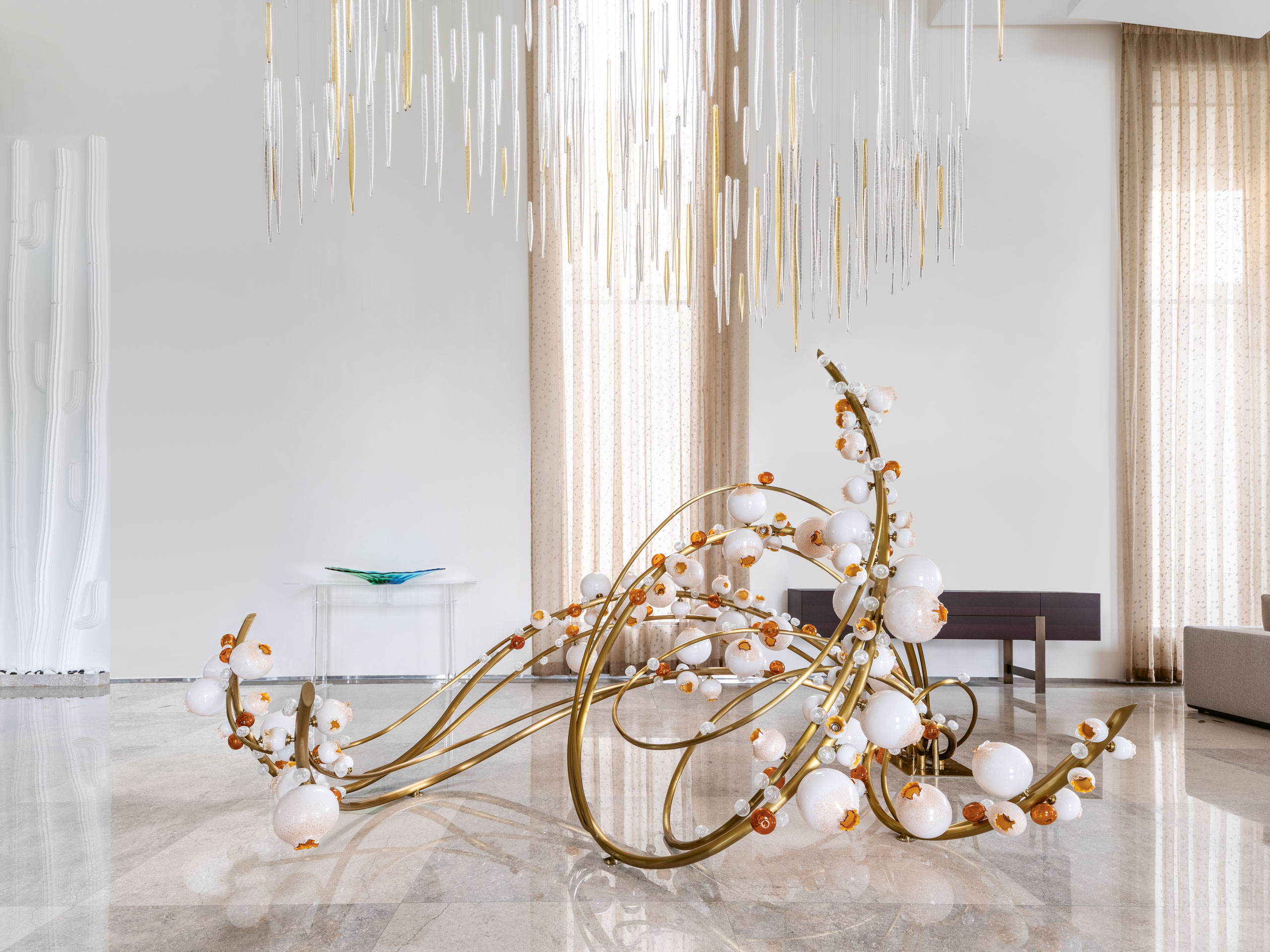
“From day one, I knew I wanted something to be installed on the ground. Nobody else was able to make it happen, but LASVIT was able to truly change the concept of a chandelier, to become a ground feature. It was a different concept from what I knew and had seen, a new idea full of inspiration,” says the owner Ali Behbehani.
In Kuwait, these are the scenes of most landscapes. Desert covers most of the mere 18,000 sq kilometers of this state’s territory. You’ll find it everywhere, with the exception of the Al-Jahrā oasis in the western end of Kuwait Bay and a few fertile lands in the southwest and in coastal areas. No wonder locals have such a deep relationship with the desert. In Kuwait, you learn to love it.

With the sunset and oncoming darkness, both Fruits of Desert sculptures gain a new dimension of light and become centerpieces of the space. It’s as if the fruits come alive and burst open in front of us.
Searching for gifts of Nature
This desert symbol is so powerful that an homage to its scenery and unique esthetic became the central theme of a custom-built lighting for the Behbehanifamily residence in the capital, Kuwait City. The design of the Fruits of Desert installation required a connection to the context of a typical local landscape, as well as the artistic heritage of the region.

The glassmaking execution of the raindrops is also multi-layered. They are not only clear or amber, the actual glass has a linear pattern. Do they also remind you of the trace left behind a drop slowly coming down a window?
Because Kuwait has a great tradition of calligraphy, which is one of the longest-maintained forms of artistic expression there, designer Stefan Mihailović drew inspiration from its fluid and organically shaped lines. He blended all inspiration into a unique lighting installation based on the contrast of a place both parched and fertile. Explaining the background of the creation of this lighting, he says, “I tried to imagine the people who lived here in the past, decades before us, before Kuwait became one of the richest countries in the world. I envisioned how they survived and how, in such a hostile land as a desert, they had no other choice but to depend on the gifts of nature. I captured that hopeful moment when fruits appear, as they float above an unusual tree.”
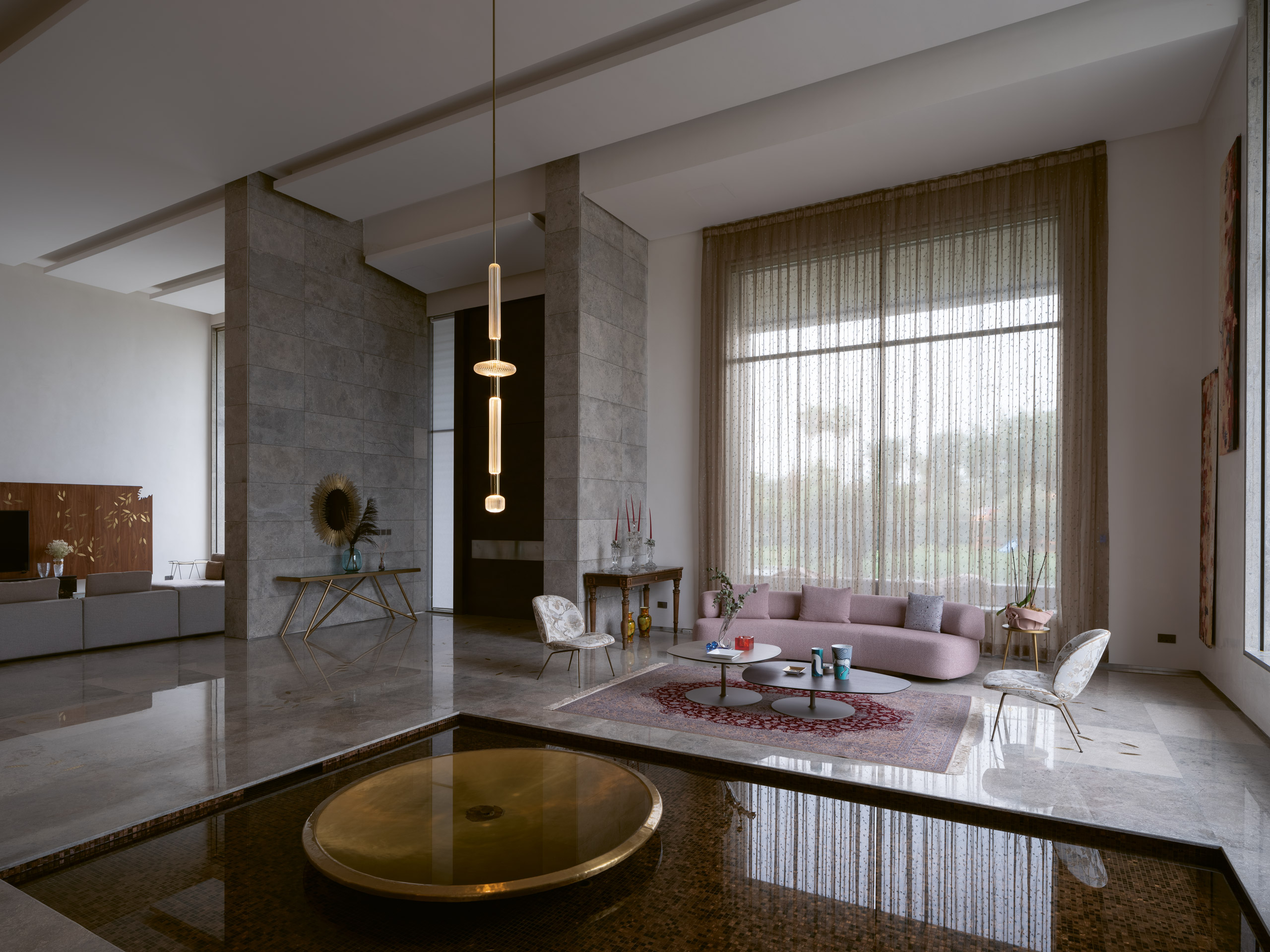
The interior architect who designed this private residence also selected one of Lasvit’s pendant lights from the Cipher collection, designed by Yabu Pushelberg.
Oasis in the desert
His artistic interpretation of precious desert fruit became the symbol of the unique moment of fertility in the scorched land, additionally watered by the beneficial rain, represented by crystal drops levitating some 5 meters above the installation. The glass sculpture intentionally doesn’t imitate a particular plant, rather it works with references to a variety of fruit and nut trees. The designer says “I connected the concept of fertility with the image of a fruit similar to a chestnut, pistachio or sunflower seed. I sketched the ideas and from the beginning, they formed into the shape of cracking balls. They best expressed the essence of the theme and prevented it from becoming too monotonous and obvious.”
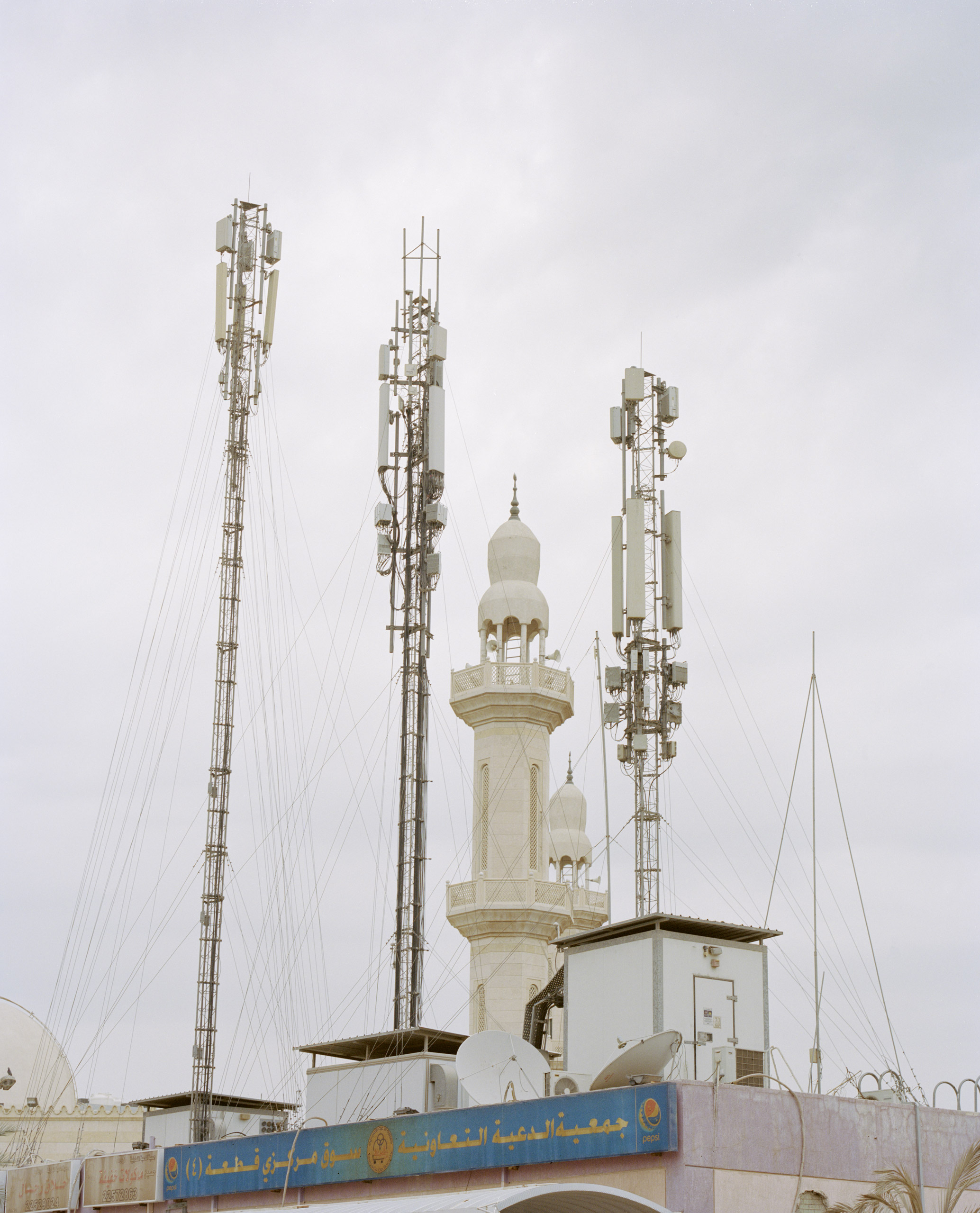
Again, this is not merely an esthetic choice. The construction of this chandelier from elements of cut glass and metal might be seen as an abstract reference to the towers that are so ever-present in the city.
Hundreds of amber shades
The lower section of the sculpture consists of 277 custom-made glass components from Czech crystal that organically shape and encase the branches. The fruits are in clusters of ten, ranging from already opened to still ripening and closed. The imaginary ripeness of the fruit is further enhanced by internal lighting, another paraphrase of life intertwined into Mihailović’s design. The designer had the larger fruit made by AJETO glassworks in Nový Bor, part of Lasvit editions, from white opaque glass that has a slightly golden layer on the inside of the components. Some smaller glass fruits are different in tone and the entire installation is dominated by amber tones.
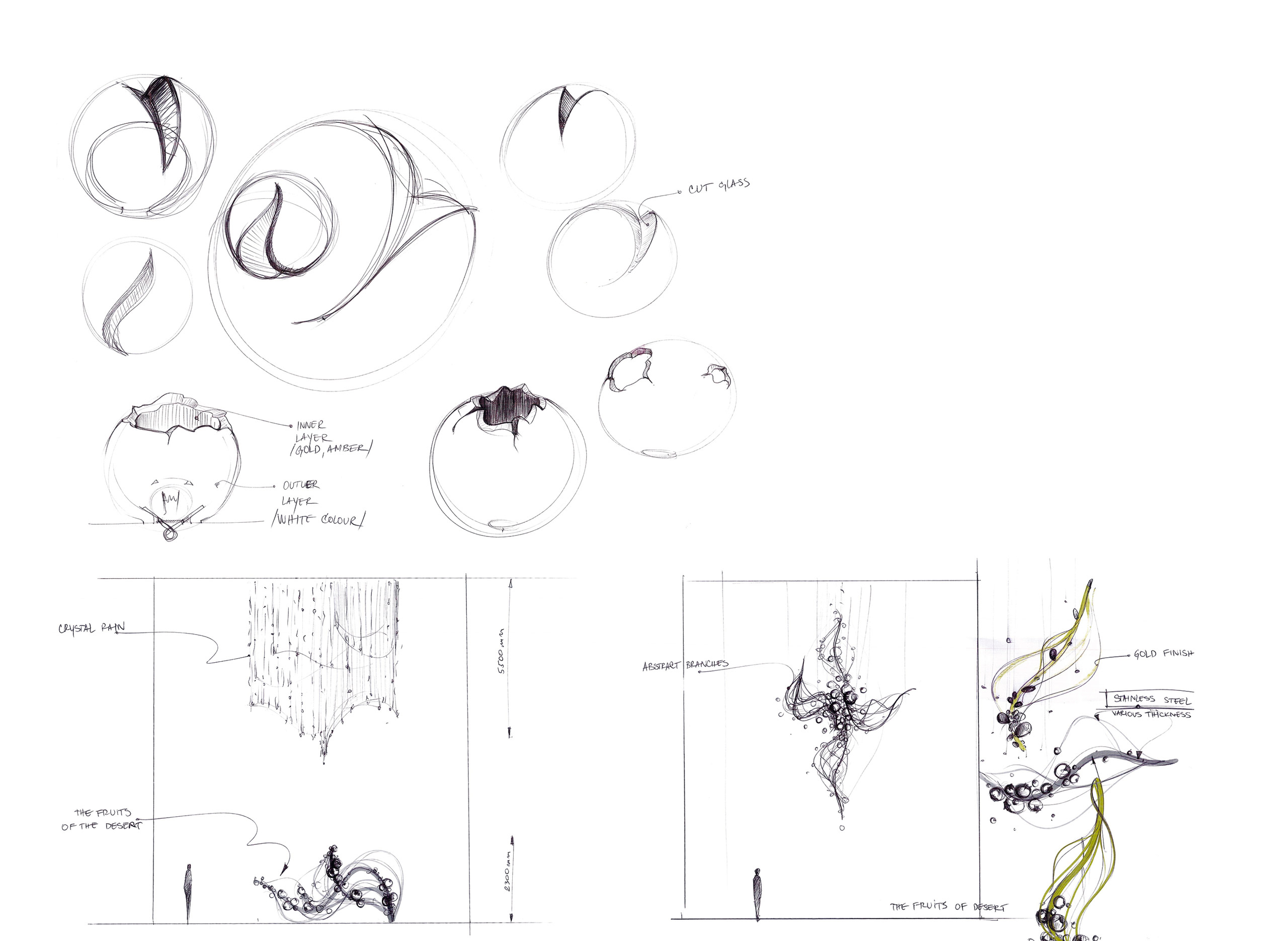
Stefan Mihailović’s sketches show how the idea of a symbolic bursting fruit developed in his head, as well as how it was possible to transform it into a physical shape.
The upper segment of the sculpture, representing rain, reflects the same color schemes. It is notable that the 128 rain drops are not depicted traditionally as a teardrop shape with rounded bottom and pointed top. They are shown as drops in the trajectory of their movement, resembling diversely long narrow dripstones. “This sculpture has sufficient breathing space surrounding it to function as the centerpiece of the interior,” the designer explains.
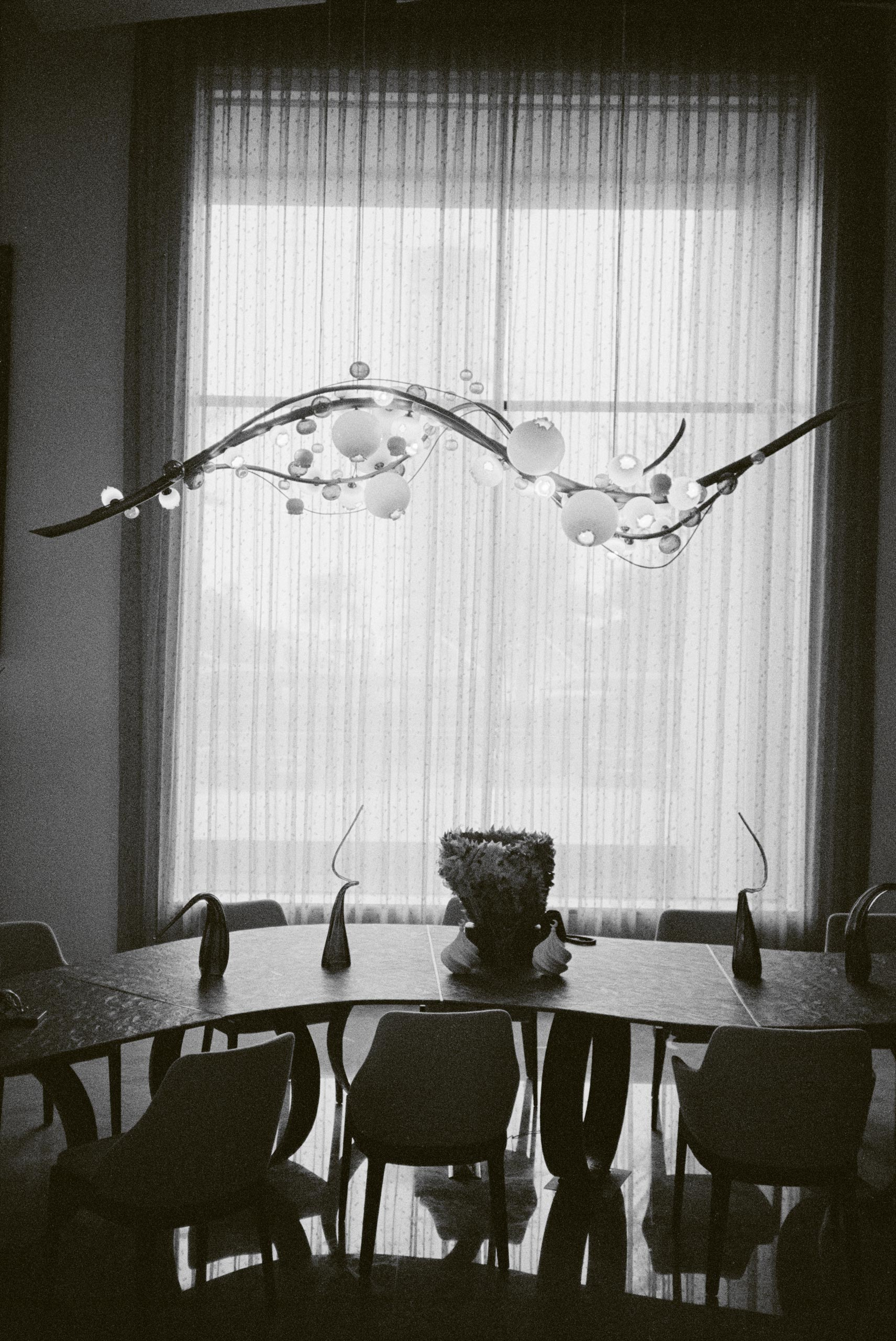
The lighting sculpture above the dining table has branches spread further into the space and it’s also a little smaller compared to the object on the ground. The fourteen meters of metal branches carry eighty-six glass components.
“Both daylight and artificial light enhance the overall impression from the installation and draw attention to the beauty of hand-made glass at any time of the day. The rays pass through transparent crystal and highlight its elegance, while the inner lighting shines from within, creating a warm and friendly atmosphere. These two effects may be combined to achieve a varied atmosphere.” Upon the owners’ request, Stefan Mihailović complemented the sculpture of the magical bush with another lighting sculpture located nearby in the living room above the dining table. He composed it of 14 meters of branches and 86 original glass components. These lighting sculptures support one another, creating a unified look, as well as presenting individual elements.

Designer Stefan Mihailović admits, “Nothing excites me more than light entering glass,” and his design reflects this passion through the play of intensity of the inner light in allegoric glass fruit in various phases of bursting.
Space for meditation
Because the desert landscape significantly affects Kuwait’s architecture, most houses have a rectangular shape arranged around a central courtyard. Similarly, in this family residence, the courtyard provides an enclosed, yet comfortably opened space, shielded from the wind and direct sunlight of the scorching desert climate. This provides a space for quiet contemplation – while enjoying the view of the original Fruits of Desert glass sculpture. The designer also carefully added a chandelier from the Cipher Collection by Yabu Pushelberg that the interior designer placed over the meditation fountain feature.
STEFAN MIHAILOVIĆ originally studied furniture and interior design at the Mendel University in Brno, Czech Republic. At the time, he primarily worked with wood, plastics and metals. During his doctoral studies, he joined the Lasvit offices in London for his stay abroad, serving as the right hand of the senior designer. After three years, he established himself as an independent designer and from 2017 worked in Singapore as a senior designer of custom-made light installations. On average, he creates two projects per week and this residence was one of his first projects as an independent designer. He’s currently been with Lasvit for seven years, living and working in Brno, Czech Republic.



